Learn how to add protein to your smoothies without protein powder! Instead, try using these basic plant-based ingredients you might already have at home.
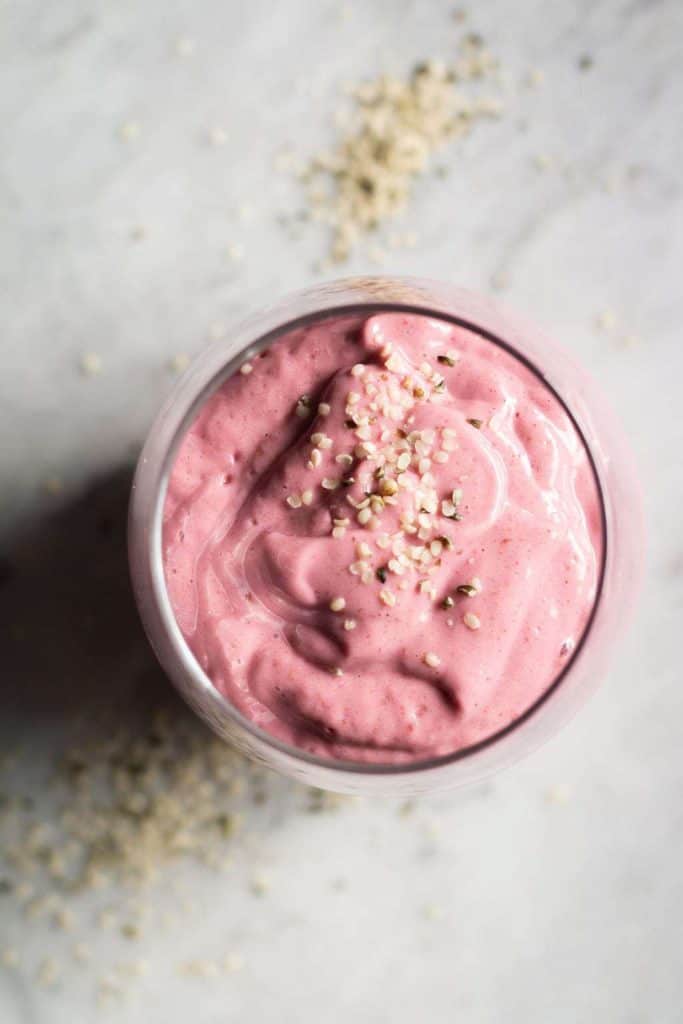
There’s nothing wrong with protein powder. They’re a quick and convenient option for adding protein to smoothies and other recipes. However, for most of us, protein powder is not necessary. Depending on the brand, it can also be very expensive and can add an undesirable flavor. Instead, it’s possible to add protein to your smoothies by using ingredients you might already have on hand.
As a plant-based dietitian, I believe that our society makes it seem like we need more protein than we actually do. That being said, protein is still important and can help with satiety, muscle recovery and more. By adding protein (and fiber!) to a smoothie, you’ll avoid getting hungry an hour after. Have you ever had a smoothie for breakfast, just to find yourself hungry soon after? It doesn’t have to be this way.
How to Add Protein to Your Smoothies Without Using Protein Powder:
Soy Milk
Soy milk has more protein than other plant-based milks. It actually has the same amount of protein as cow’s milk per cup. 8g to be exact. For that reason, it’s a great option for adding plant-based protein to a smoothie! Pea milk is another less popular option that’s comparable to soy milk in terms of protein.
Hemp Hearts
Hemp hearts have a more protein than most seeds and a little goes a long way. Try adding 3 tablespoons to your smoothies for an additional 10g of protein. It also offers some omega-3’s and a touch of fiber.
Chia Seeds
Chia seeds have a little less protein than hemp hearts at 6g per 3 tablespoons. However, it does add a significant amount of fiber and omega-3’s.
Nuts
If you have a strong blender, try adding some whole nuts (unsalted) to your smoothies. For example, 1/4 cup of walnuts will add almost 5g of protein. This may not seem like much, but when added with other protein sources, it adds up!
Nut or Seed Butter
Peanut butter, almond butter and other nut or seed butters can add some creaminess and nutrition to your smoothies. 2 tablespoons of peanut butter will add 8g of protein while almond butter will add about 7g. They also add a delicious nutty flavor to smoothies. However, be careful with the peanut butter as its strong flavor might not go well with every smoothie. If you want a nut-free option, you can try SunButter, which adds 7g of protein per 2 tablespoons.
Tofu
Don’t give up on tofu too quickly. When added to smoothies, the light flavor is undetectable! That being said, start with a small portion, since large portions can overpower a smoothie. Try starting with 1/3 cup per serving, which will add almost 7g of protein. You can find two delicious tofu smoothies in my Cooking with Legumes eBook.
Lentils
Cooked lentils can be added to smoothies too! However, they can add a strong flavor to your smoothies if not done right. Try adding 1/4-1/2 cup of lentils to your smoothie for an additional 4.5-9g respectively. Red lentils would be best! They would also be best in sweeter smoothies with lots of flavor.
Beans
Just like lentils, cooked beans can be added to smoothies for extra protein and fiber. Again, they will do best in sweet smoothies packed with flavor to mask the light bean taste. When done right, you won’t taste the beans at all! 1/2 cup of most beans will add almost 8g of protein.
Oats
Grains contain protein too! While they might not contain as much protein as other ingredients in this list, everything adds up. 1/4 cup of rolled oats will add 2.5g of protein to your smoothie.
Not Vegan?
If you’re not vegan, you can try plain Greek yogurt, cow’s milk or cottage cheese! Greek yogurt is a great option that adds 18g per 3/4 cup serving!
Know that individually, not all of these options will add a substantial amount of protein. However, combine 2 or more options and you’ll have a filling and nutritious smoothie. You can stick to the basic seeds and milk, or try something different like tofu or beans!
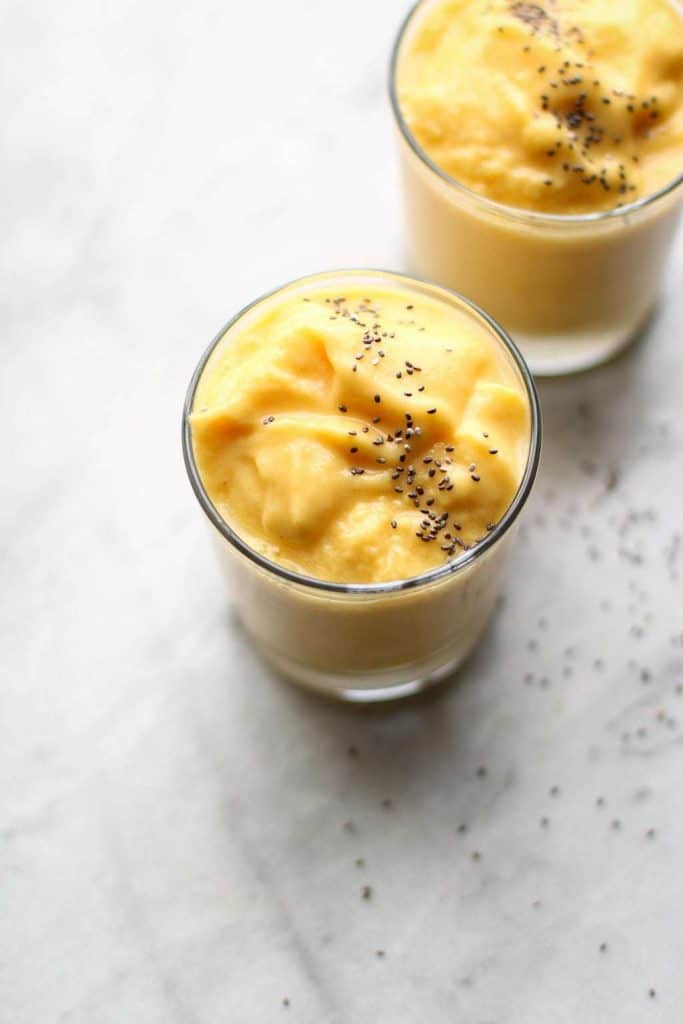
Other Tips for Adding Nutrition to Your Smoothies
Instead of adding juice, try adding plant-based milk, water or coconut water to your smoothies. This will limit the amount of sugar added. While there’s absolutely nothing wrong with adding fruit (that’s the point of smoothies!), using juice without adding more protein or fiber means you’ll likely be hungry soon after.
Add fiber by throwing some oats, ground flax seeds, spinach, kale, frozen cauliflower, nuts or other seeds in your smoothie. Of course whole fruits have fiber too!
Add some fats for satiety by adding some avocado (fresh or frozen) and/or nuts and seeds. Flax oil is also a great option that will add some omega-3’s.
For more tips, check out these posts:
Protein Powder-Free Smoothie Recipes to Try:
- Nourishing Banana Oat Smoothie
- Refreshing Green Mango Smoothie
- Pink Berry Lime Smoothie
- Hydrating Super Green Smoothie
- Golden Mango Citrus Smoothie
- Nourishing Strawberry Banana Oat Smoothie
This information is intended for educational purposes only and is not meant to replace individualized nutrition or medical advice.
Protein amounts source: USDA food composition database.
This post contains affiliate links. I only share products that I trust and recommend. Choosing to use these links helps to support me and this blog. Thank you!
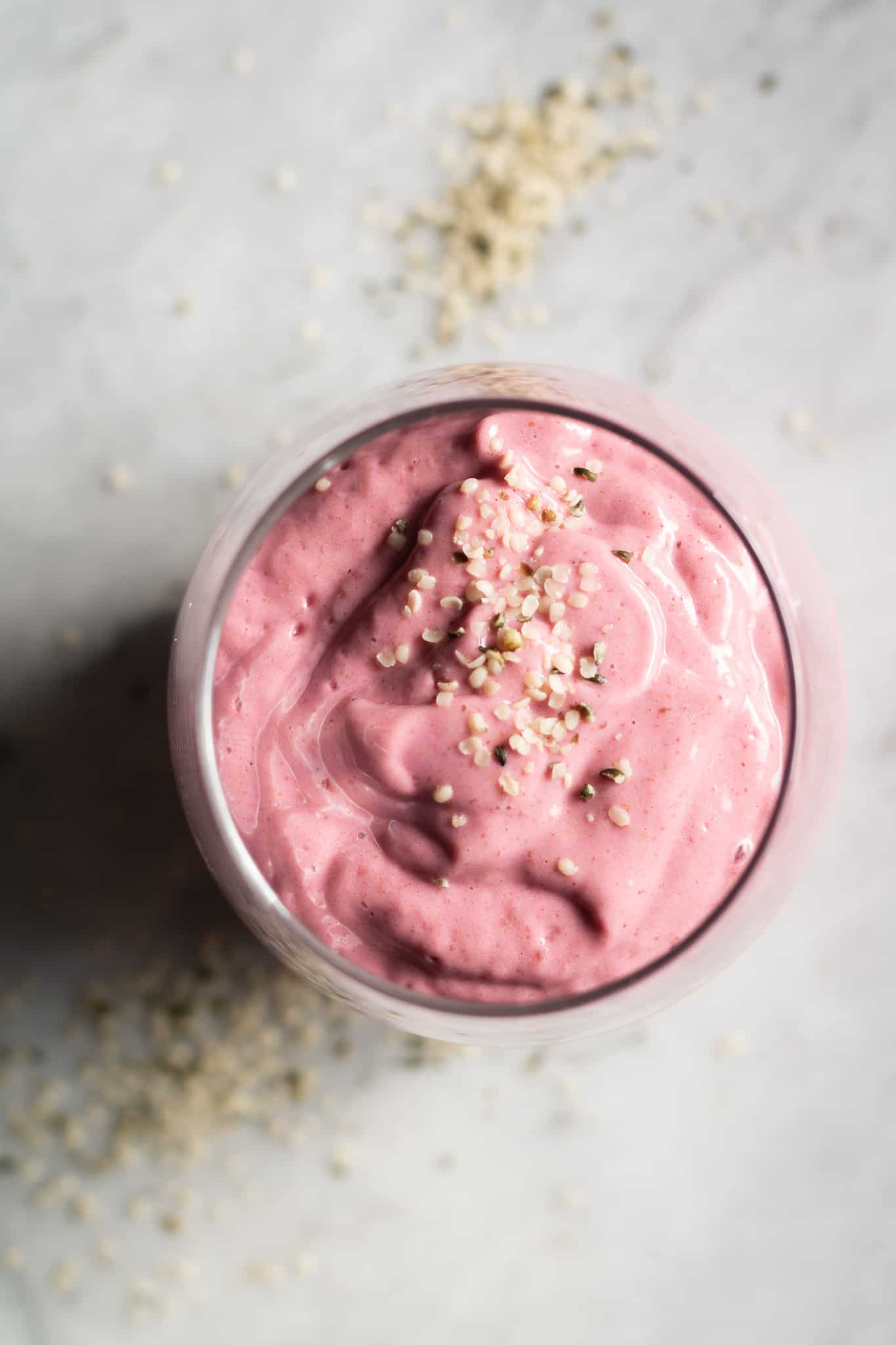

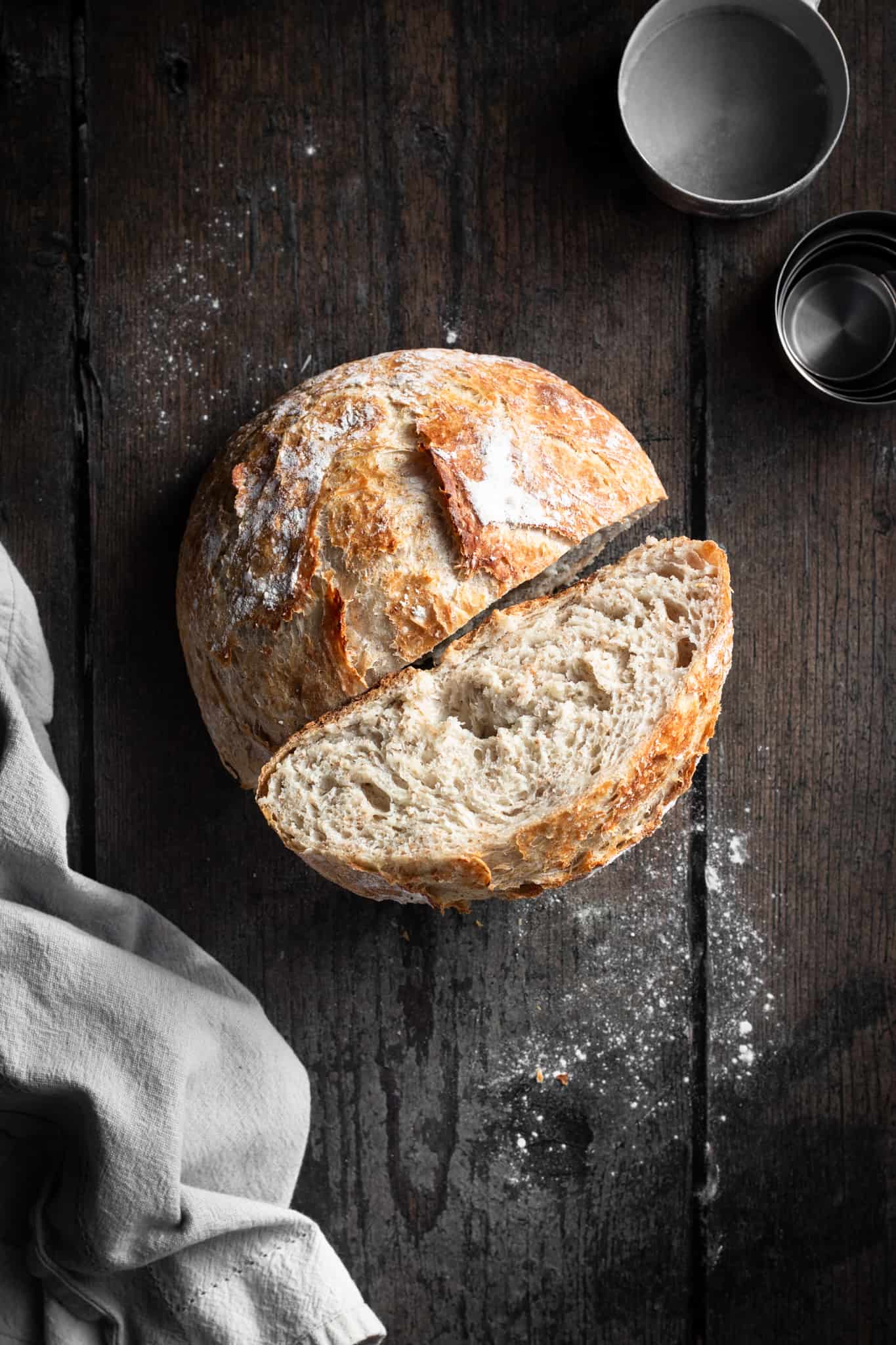
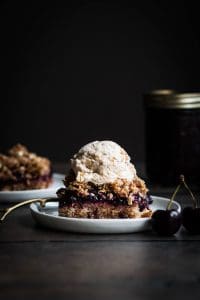

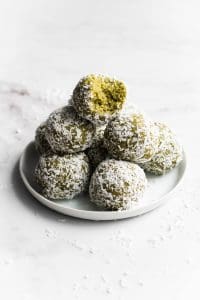

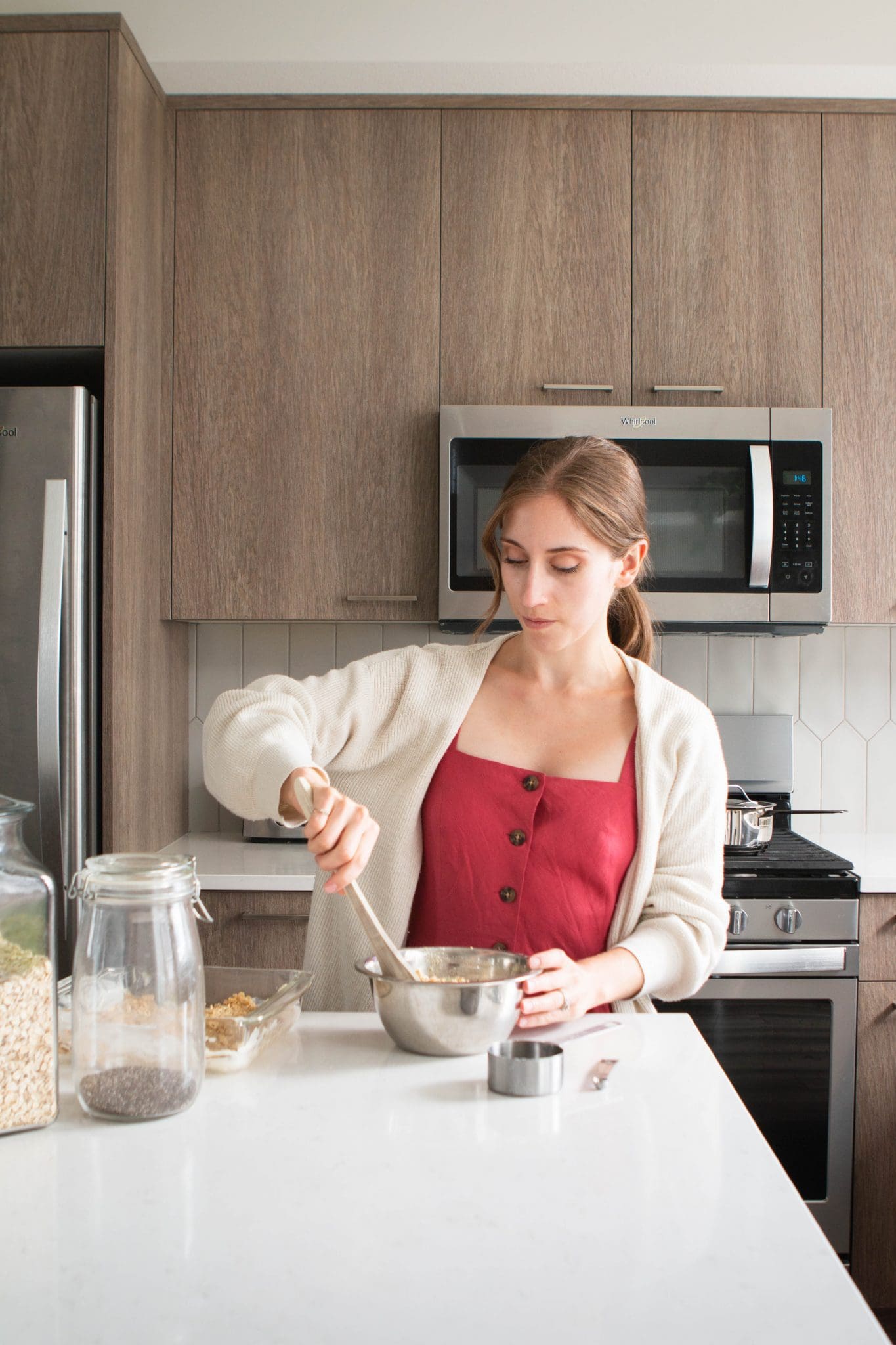
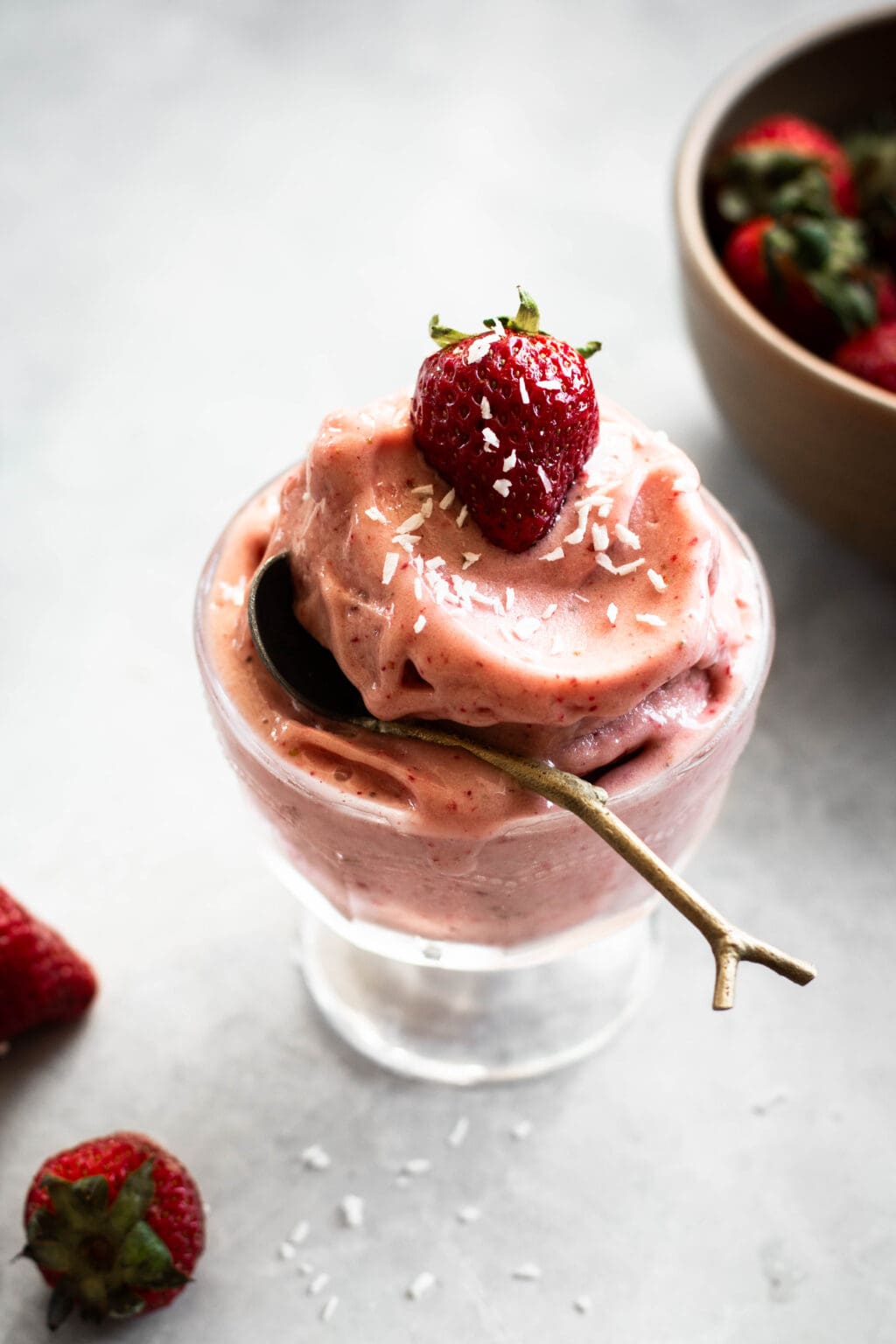
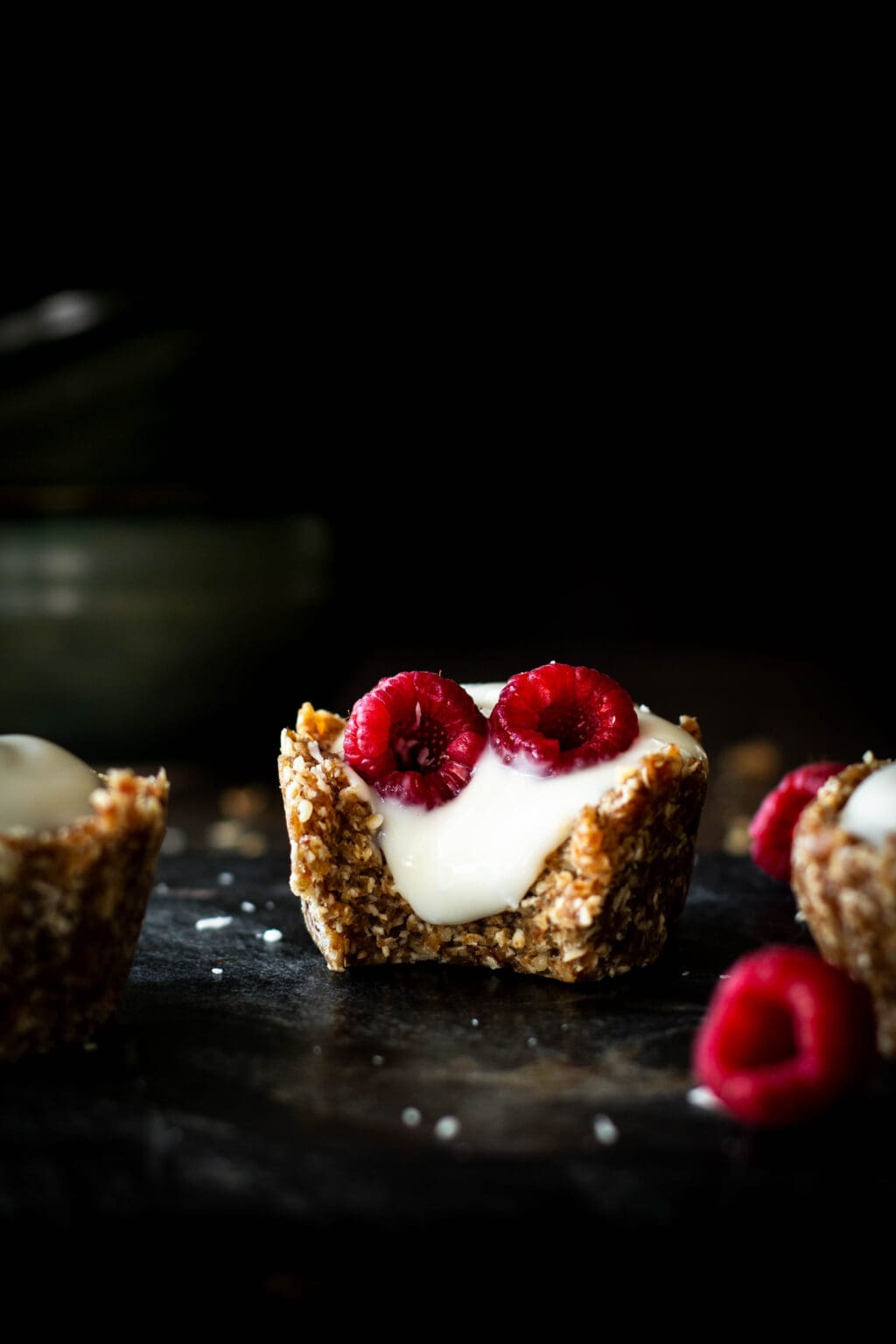


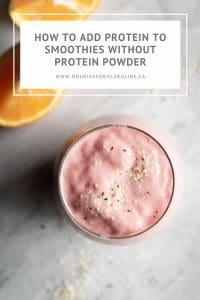
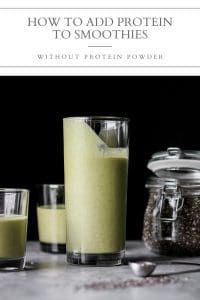
Leave a Reply